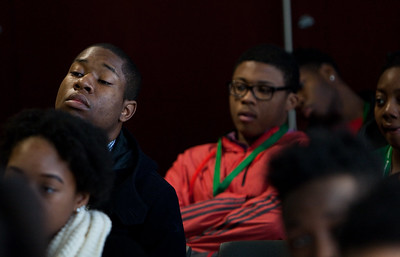Since at least 2001, the first year enrollment data are available in the Integrated Postsecondary Education Data System (IPEDS), the data on Black students at Washtenaw Community College have looked different than the data on White students and students from other minority groups in at least one significant way: the number of enrolled male Black students has never exceeded the number of enrolled female Black students.
This discrepancy isn’t small. The number of female Black students has always exceeded the number of male Black students by a wide margin. If you look at other student groups by race, this isn’t the case. At WCC, overall male enrollment exceeded overall female enrollment until 2020. This didn’t attract much attention until total male enrollment at community colleges began consistently trending below total female enrollment.
This is important because men typically out-earn women, so when men abandon higher education, it’s because they can either earn as much by directly entering the labor force, or the time, effort, and money they must expend to earn a degree is not worth the resulting rise in pay.
It’s also not a matter of educational progression. According to the Bureau of Labor Statistics, among adults aged 25 and older in 2021, the high school completion rate among Blacks was 95%. That compares with 93% of Whites. In fact, only Asians register a higher high school completion rate at 96%. (The high school completion rate among Hispanics/Latinos was 78%.) So, that means the vast majority of Black people have opened the door to a college education.
Thirty-one percent of Hispanic and Black high school graduates (over the age of 25) never enrolled in a post-secondary institution after high school. That compares to 25% of White adults, and 15% of Asian adults.
Improved programs will return Black students to the classroom
In 2021, the median weekly salary for a Black worker was $801. That compares to a median weekly salary of $777 for Hispanic workers; $1,018 for Whites and $1,328 for Asians. Black male workers were most often employed in transportation and utilities related sectors, while Asians were most likely to be employed in management and professional occupations. Across all racial groups, women were most likely to be employed in the education or healthcare sectors.
In 2021, the unemployment rate among Black adults was 8.6%. That’s higher than any other racial group. (Overall unemployment in 2021 was 5.3%.) Remember, the unemployment rate measures people who are not working and who want to work or who have been looking for work. It does not include adults who are voluntarily out of the labor force.
So, Black adults are paid less and unemployed more than any other racial minority. They don’t reap the protective effect of a college degree that workers of other races get. And even when they have a degree, they’re paid less than workers in nearly every other racial group.
To attract Black students into college classrooms, community colleges must address the abysmally low wages that most community college graduates earn ten years after graduation. Community colleges can’t control conditions in the labor market, but they can be selective about what they teach. By eliminating degree programs with only low earnings potential, community colleges can begin to restore the value of a community college degree among minority workers, where higher wages are most needed.




















